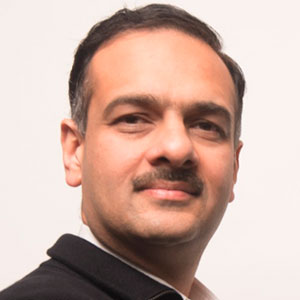
Being engaged in the growth of cloud infrastructure for over a decade, I got to see and live through successes and failures of various cloud transformation journeys. Interestingly, two of them exemplify the spectrum of “pie in the sky” disappointment to “bang for the buck” impact.
Both are large multi-billion dollar enterprises in the industrial sector and had roughly the same starting point and end goal. This first enterprise wanted to modernize its applications deployed at distributed sites leveraging the cloud. It wanted to arm its employees on the ground with mobile applications, the ability to collect and analyze data in the cloud and leverage the insights to make business decisions for maintenance, operational health, etc. The second enterprise was interested in delivering modern applications to its remote personnel for onsite assistance and pulling all the data in the cloud for business targeting and customer decision making.
Both started with a “cloud first” mindset partially due to pressure from leadership and partially to get away from inefficiencies of their own IT challenges. Both selected Microsoft Azure as their cloud of choice with credits from Microsoft making it very enticing to start the cloud journey.
But this is where the similarity ends. The first one is still struggling to show any value after 2 years of investments while the second one is off to the races reaping the benefits of cloud. Here’s what happened.
The first enterprise took a disruptive approach to write new mobile and data analytics applications in the cloud. It also decided to rewrite and refactor its legacy working applications in the cloud to get the maximum value. While architecturally sound, it underestimated the effort and expertise required to uplift existing working applications and slowed down both old and the new. After showing no tangible results after one year of development work, it came under budgetary pressures which further hampered progress. Now it is in a stage where the patient has been opened up for surgery but has no one to stitch back. Sounds scary? But isn’t it quite true for various IT shops we are familiar with?
The other enterprise was more pragmatic in realizing the value of “don’t fix what is not broken” and leveraged its investments in building new applications and data analytics tools. It connected new cloud apps to legacy applications and data in its data centers. The set up worked beautifully to deliver business value. However, user experience was abysmal given the latency between cloud and data centers. Also, the cost structure was high given the need to invest both capex in the data center and opex in the cloud. But at least it had something working within a year. Continuing on the pragmatic approach, it looked for options to forklift its legacy apps and databases running on general purpose x86 and specialized Power servers to the cloud and integrate them with new applications. Fortunately, Azure now offers such capabilities via Skytap and within just a few weeks it was able to migrate and exit its data centers. Its end-to-end application experience improved, cost structure became fully aligned to the cloud operating model and it was able to keep focus on building new apps vs. rewriting existing apps. Leveraging its pragmatic digital transformation it leapfrogged its competition in driving double digit growth in an otherwise slow industry.
Keep in mind, this is not just a lift and shift model which would not integrate well into the cloud and could in fact increase costs and inefficiencies. This approach calls for a modern cloud-based control plane that can handle legacy workloads just like modern ones and a software defined data plane that can connect such applications seamlessly into the cloud infrastructure. The trick is in wrapping a legacy application in the cloud operating model so you don’t have to refactor it but it can still leverage cloud-based services for analytics, security, etc. This approach simplifies operations and can shrink or grow with your cloud transformation.
Moral is, be pragmatic in your cloud transformation and don’t be left behind!
About the author:
 Rahul Tripathi – Chief Product and Technology Officer at Skytap
Rahul Tripathi – Chief Product and Technology Officer at Skytap
Rahul has over 25 years of IT industry experience building innovative products and scaling high-impact technology organizations. Prior to joining Skytap, Tripathi was the CTO and General Manager of Services and Solutions Engineering at Nutanix. Before Nutanix, Tripathi was VP of Product Management and Engineering at Hewlett Packard Enterprise, transforming a $1B IT Operations Management (ITOM) Software and SaaS portfolio. He also worked at Cisco for over a decade, where he brought the first cloud router and virtualization-enabled branch servers to market.
